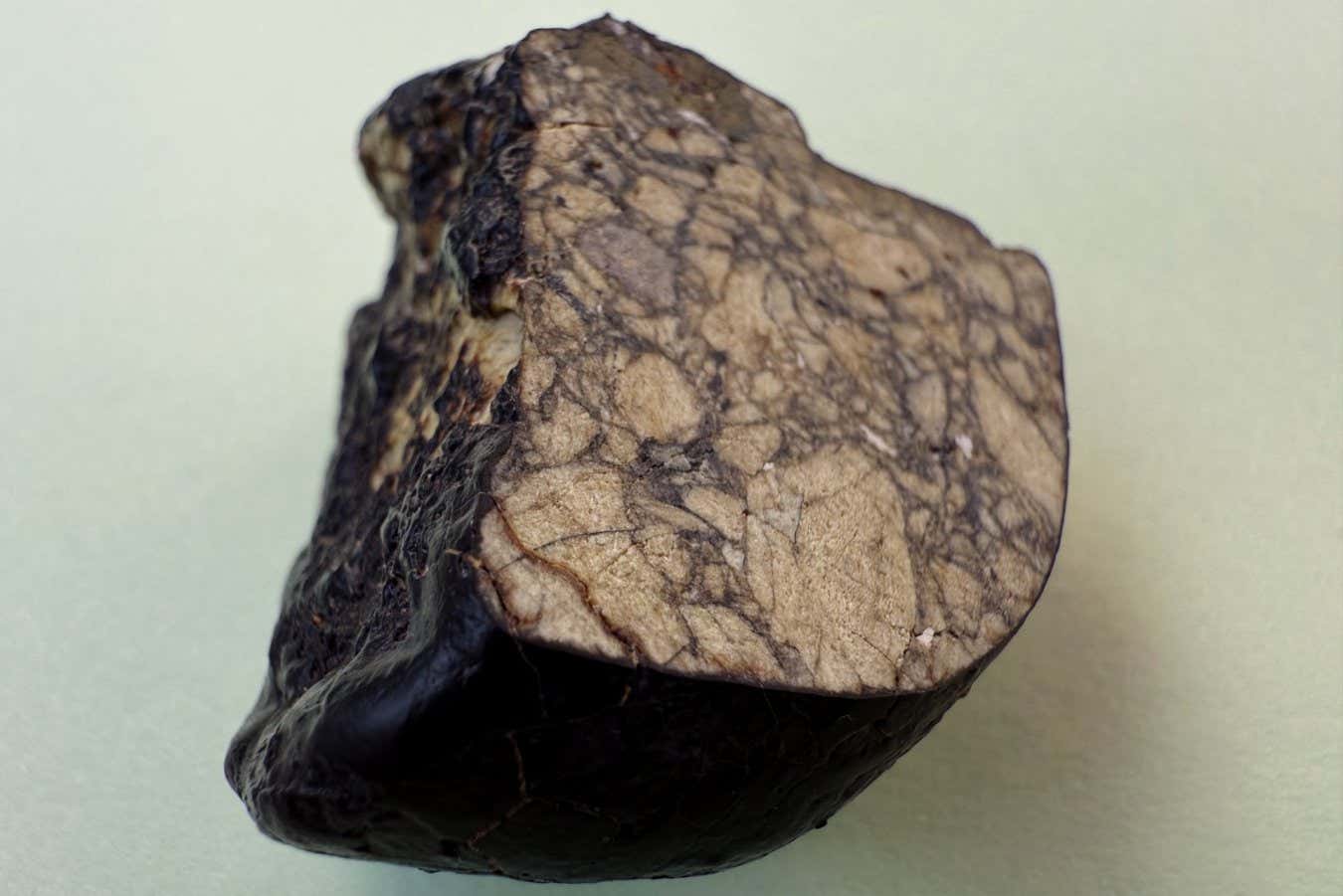
The Northwest Africa 12264 meteorite is older than expected
Ben Hoefnagels
Tiny shavings from a single meteorite could completely overturn our understanding of how the solar system formed, after the space rock turned out to be older than expected.
Previous research suggests that small rocky bodies called protoplanets formed throughout the solar system, but those found beyond the asteroid belt between Mars and Jupiter came together a bit later than those further towards the centre – 4.563 billion years ago, compared with 4.566 billion years ago for the inner protoplanets. This difference was thought to be because the outer bodies had more water and ice, which slowed down the melting of an inner core.
This gap of three or four million years, although relatively short in cosmological terms, was a commonly accepted part of our cosmological history, but now Ben Rider-Stokes at The Open University in Milton Keynes, UK, and his colleagues say it has to go.
Planet formation is thought to involve accretion, in which dust and gas are pulled together by gravity, and then differentiation, in which the accreted material warms up and melts, separating into a core, mantle and crust. These processes were thought to have occurred at slightly different times for the inner and outer protoplanets of the early solar system, explaining their different history, but now it seems this isn’t the case.
The team’s discovery hinges on a small meteorite called Northwest Africa 12264, which weighs around 50 grams and was purchased from a dealer in Morocco in 2018. The researchers were given permission by its owners to analyse tiny particles shaved from the object. They found that the ratio of chromium and oxygen, which varies in a predictable way throughout our solar system, proved that the meteorite originated in the outer part.
Its composition also showed it was part of a planetary mantle – the section between the core and crust – making it the first such sample found from the outer part of the solar system, although the protoplanet it came from no longer exists. “That planet must have been smashed apart pretty dramatically to excavate this mantle-like material,” says Rider-Stokes. “There must have been a very, very large collision.”
But crucially, its age as measured by isotopes of lead went against the idea that outer protoplanets should be younger. “It really sort of took us by surprise because it was extremely old, like it’s some of the oldest material in the solar system. What it suggests is that the rocky planets formed in the inner solar system and in the outer solar system at the same time,” says Rider-Stokes, which could force a rewrite of the models we use to understand this process.
Sebastiaan Krijt at the University of Exeter, UK, says that shifting events that happened more than 4 billion years ago by a couple of million years may not feel hugely important, but will in fact have a big impact. Understanding the sequence of events that formed our solar system, and how the various processes interacted, is vital – both for research on our solar system and star systems elsewhere in the universe.
“These formative stages are very short and a million years can make a big, big difference,” says Krijt. “Getting the chronology right and getting the order of things right is very, very important.”
Topics:







